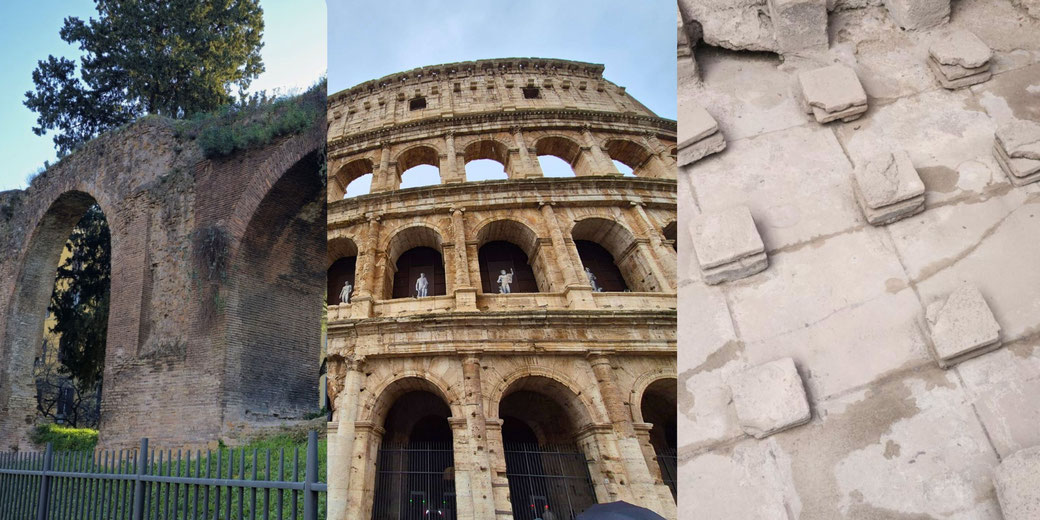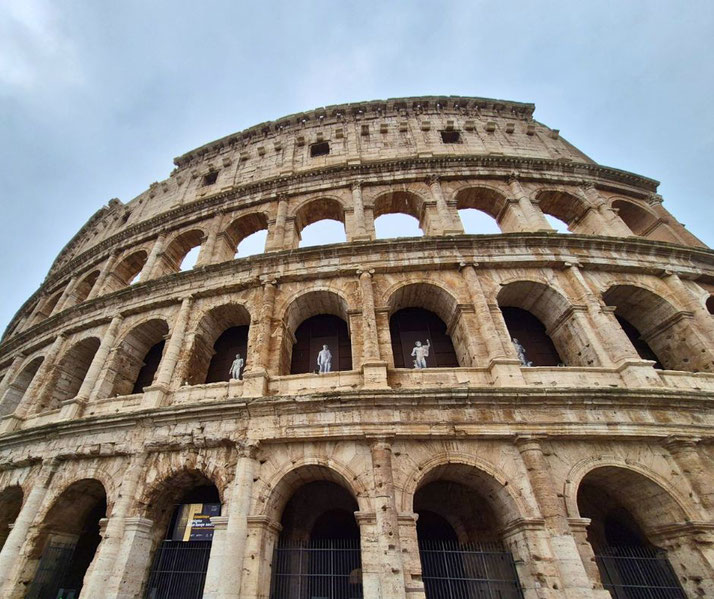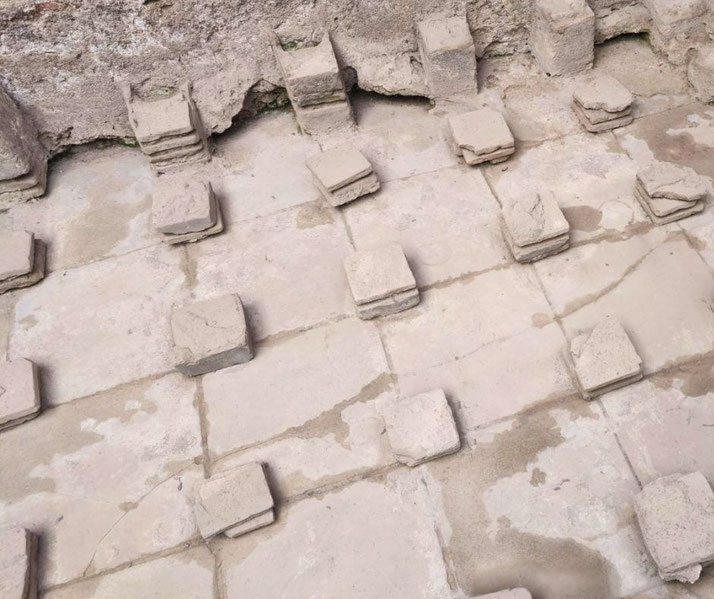From roads to bikinis: 10 incredible Roman inventions that created the modern world

There is no doubt that ancient Rome played a significant role in forming the western world, which lasted over a thousand years and made wide-ranging contributions that cover architecture, engineering, medicine, and law.
Rome created an early version of the newspaper and also built multi-level apartment buildings and used fast-setting hydraulic cement.
Here, we look at 10 clever Roman inventions, both well-known and less familiar, that have influenced our world today.
1. Aqueducts
Roman engineers built aqueducts, impressive water channels that carried water to cities across the Empire.
Their construction also combined practical design with attractive structures.
Historically, aqueducts were built over 500 years, which began in 312 BC. To transport water, they used gravity to move it from distant sources into city centres.
Much of the system ran underground. Meanwhile, above-ground bridges crossed valleys, such as the Pont du Gard in France.
Roman aqueducts maintained a steady slope to ensure that water flowed at the right speed.
Workers were able to achieve this by using simple levelling tools to set this slope.
By supplying water to baths, latrines, fountains, and private homes, aqueducts boosted public health. Such access reduced disease and improved hygiene in Roman cities.
Today, modern water systems owe much to Roman aqueducts. Next time you turn on a tap or admire an arched bridge, remember you are seeing the result of Roman innovation.

2. Roads and Highways
The Romans used the saying “all roads lead to Rome” to describe their network of overland routes that linked the centre of the Empire to its furthest borders.
At its height, the Roman road network covered more than 400,000 kilometres, and about 80,500 kilometres of these routes were surfaced with paving stones.
These roads helped with trade, enabled troops to move, allowed ideas to spread and supported the administration of the Empire.
Romans built their roads very carefully to make them straight and long-lasting.
They included several layers: a base of levelled soil and small stones, a layer of larger stones, a layer of concrete, and a top layer of paving stones.
To manage water, they also added drainage channels along each side and gave the road a slight curve to carry water away.
Because of these features, many Roman roads lasted for centuries. Some remain visible or are still used today.
Main Roman roads were about 4.85 metres wide, which let two vehicles meet and pass each other.
They also placed milestones to show the distance to the next town or city, and they set up horse-changing stations, or mutationes, every ten miles so messengers could travel fast, which let Romans move soldiers quickly, send messages over long distances, and support trade and sharing of ideas.
The road system connected people across the Empire, which let different groups trade goods, share ideas and use services that were once too hard to reach, which also spread Roman culture, laws and language in conquered areas.
Today we still see Roman road-building methods in our highways. Every time someone goes on a road trip or drives through a city, they follow in the footsteps of Roman engineers.
3. Concrete
The Romans did not invent concrete, but were the first to use it on a large scale and change the way people built structures.
Roman concrete mixed volcanic ash, lime, water, and pieces of brick or rock. The key ingredient was the volcanic ash, which was called pozzolana.
When ash mixed with lime and water, it caused a reaction that let the mix harden even underwater.
That reaction made Roman concrete very strong, and it did not wear away easily. Many buildings made from it still stand today.
In fact, Roman concrete formed the base for famous buildings like the Pantheon and the Colosseum.
Because of this, builders could create larger and more complicated structures than before.
The Pantheon was built in AD 126 under Emperor Hadrian and it still has the largest unreinforced concrete dome in the world.
Concrete allowed builders to pour it into moulds to form shapes that stone could not achieve.
Using that method let builders create open spaces and the familiar Roman arches that many people recognise.
Today concrete is one of the most used building materials in the world, but modern concrete is not the same as Roman concrete.
Recently researchers studied Roman concrete to learn how to make modern mixes more durable.
In that way Roman concrete has shaped our past and could help shape our future.

4. Underfloor Heating
An early form of central heating, the hypocaust was an underfloor system that made public bathhouses and some Roman homes comfortable.
It worked through spaces and tunnels under floors and inside walls.
A furnace heated the air in these spaces, which then moved through the building and warmed floors and walls.
Later, the hot air and smoke left the building through special channels. By doing so, this system let the Romans heat large areas without wasting fuel.
Although it seems simple, constructing a hypocaust required careful planning.
To support this design, floors sat on rows of brick pillars, or pilae, which left room for air to flow, while hollow pipes were embedded in the walls.
Wealthy Romans were the ones who could afford to add them to their houses, which provided a level of comfort not found among poorer residences.

5. Surgery Tools and Techniques
Roman medical kits included tools like forceps, catheters, scalpels, bone drills, and simple specula.
The Romans did not invent surgery, they learned from the Greek physician Hippocrates and Galen of Pergamon and made their own designs.
Some tools targeted specific tasks, such as removing cataracts or bladder stones.
For example, a 'spatula probe' had a spoon end to apply medicine and a point to check wounds.
They also used a scalpellus, a small sharp knife, and forceps to grip or pull objects.
In Roman times, medici handled the tools, but surgeons, called chirurgici, had the most skill thanks to being trained on battlefields, where they learned to treat wounds and injuries in tough conditions.
They used methods like trepanation, which drilled holes in the skull to ease pressure, set broken bones and performed amputations.
Roman surgery may seem rough today, but their tools and ideas laid the base for later advances.
6. Public Sanitation
One of the most often ignored but essential achievements of the Romans was their early method of public sanitation.
The Romans knew the value of keeping clean for public health, and they built a large and very modern sanitation system, which had underground pipes, street cleaning teams, and fresh water from aqueducts.
Roman towns had public toilets called latrines. Specifically, they were social spaces and could hold up to 50 people at once.
The latrines were washed by water from the baths and aqueducts, which made them a useful and clean way to get rid of waste.
The most impressive part was the Cloaca Maxima, or ‘Greatest Sewer,’ in Rome, which began as a drainage channel in the 6th century BC.
Later it carried wastewater from latrines, baths, and drains into the River Tiber, which, along with others in the empire, helped keep cities clean and kept people healthy.
The Romans also had street cleaners, who were called stercorarii, who kept roads free of animal droppings and rubbish.
7. The Postal Service
The Cursus Publicus, or public way, was the government-run messenger and transport system of the Roman Empire, which was a forerunner of today’s postal service.
Emperor Augustus started it in the 1st century AD. Essentially, it was a system made to move messages, officials, and goods across the empire quickly.
The Cursus Publicus covered a large area of the empire and it was supported by stations called mansiones that were placed at regular intervals along Roman roads.
These provided places to stay, fresh horses, and supplies for messengers. Also, there were relay points where riders changed horses more often.
When messengers used the relay system, they could cover up to 80 kilometres a day. This let imperial orders reach distant regions within weeks.
Messengers carried documents called diplomata that let them use the system’s services.
Such rules kept the system from being overloaded and ensured it worked for key communications.
They kept border forts in touch with the government, helped collect taxes, sent military orders, and shared news and decrees.
The system continued to be used in various forms for centuries after the Western Empire fell.
The idea of a regulated system for moving letters and goods over long distances is still at the core of today’s postal networks.
When we send mail across the country or get a package, we follow a system that goes back to the Roman Empire.
8. Multi-Story Apartment Buildings
Ancient Rome needed more housing as its cities grew, so builders created multi-storey apartment buildings called insulae.
Insulae were called 'islands' in Latin, and had shops or workshops on the ground floor and apartments above.
People rented the upper floors, which sometimes reached six or seven stories.
Because of this, the main reason for insulae was to fit many residents into small areas, which spread across the Roman Empire as cities got larger.
However, living conditions were often poor because rules and upkeep were lacking. Insulae suffered from overcrowding, poor airflow and fire dangers.
Also, upstairs was less popular because of many stairs, tight spaces and low light. The risk of collapse or fire was common.
9. Newspapers
The Romans also created an early form of daily news called Acta Diurna, or 'Daily Acts'.
It listed political and military news, official orders, trial results, births, deaths and public events.
Officials carved the notices on stone or metal and placed them in central public areas, such as the Roman Forum, where citizens could read them.
Acta Diurna was important because it kept people informed, which helped those without education or personal contacts get news.
While Acta Diurna differed from modern newspapers, the idea of regular news for the public began with it.
10. The Bikini
The bikini, a staple of modern swimwear fashion, may seem like a recent invention, but its roots can be traced back to ancient Rome.
Mosaics discovered in the Villa Romana del Casale, a Roman villa in Sicily, depict women wearing two-piece outfits that bear a striking resemblance to the modern bikini.
These early bikini-like garments consisted of a cloth worn around the waist to cover the lower body and another piece of fabric worn over the breasts.
The Romans had a deep appreciation for physical fitness, and activities like bathing and exercise were an integral part of their culture.
The availability of public baths and a strong emphasis on maintaining a healthy body played a significant role in the acceptance and development of clothing that allowed freedom of movement.
It is worth noting that the bikini-like garments depicted in Roman mosaics were typically worn during athletic activities rather than for general beach-going or leisure.
The purpose was likely to provide support and flexibility for physical exertion rather than purely for aesthetic reasons.
While the bikini-like swimwear of ancient Rome did not spark a fashion revolution at the time, it did establish a historical precedent for the concept of a two-piece swimsuit.
The modern bikini, as we envision it, gained popularity in the 20th century with the daring designs of fashion designers such as Louis Réard and Jacques Heim.
The name 'bikini' itself is believed to be inspired by the Bikini Atoll, a site of nuclear tests in the Pacific, chosen to symbolize the explosive impact the swimsuit would have on the fashion world.
What do you need help with?
Download ready-to-use digital learning resources
Copyright © History Skills 2014-2025.
Contact via email
With the exception of links to external sites, some historical sources and extracts from specific publications, all content on this website is copyrighted by History Skills. This content may not be copied, republished or redistributed without written permission from the website creator. Please use the Contact page to obtain relevant permission.





